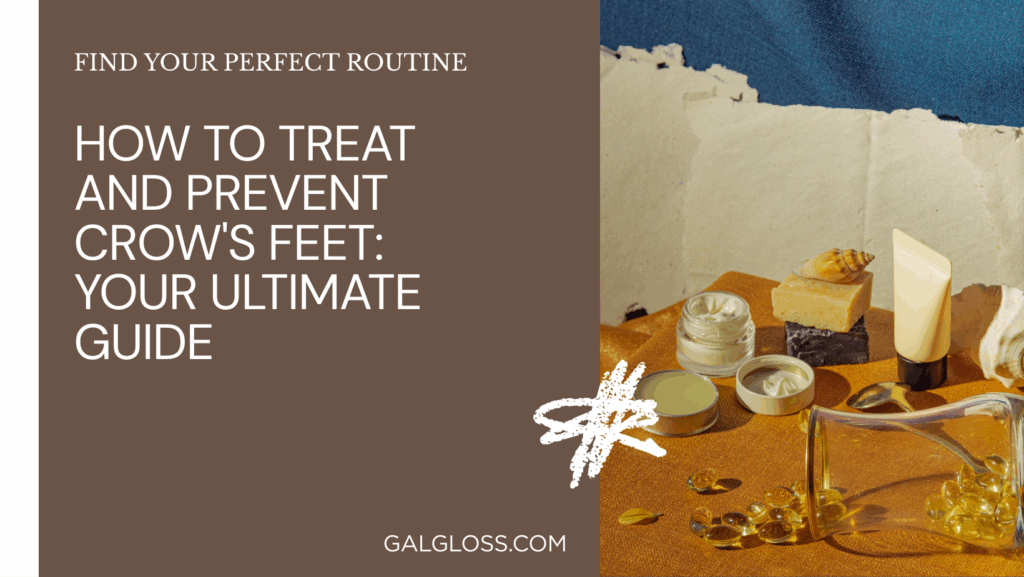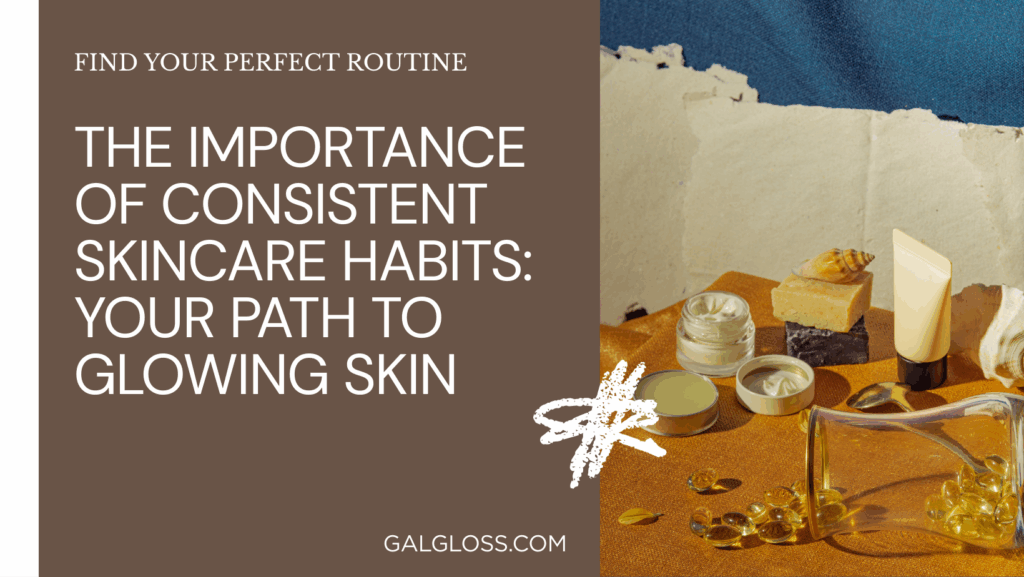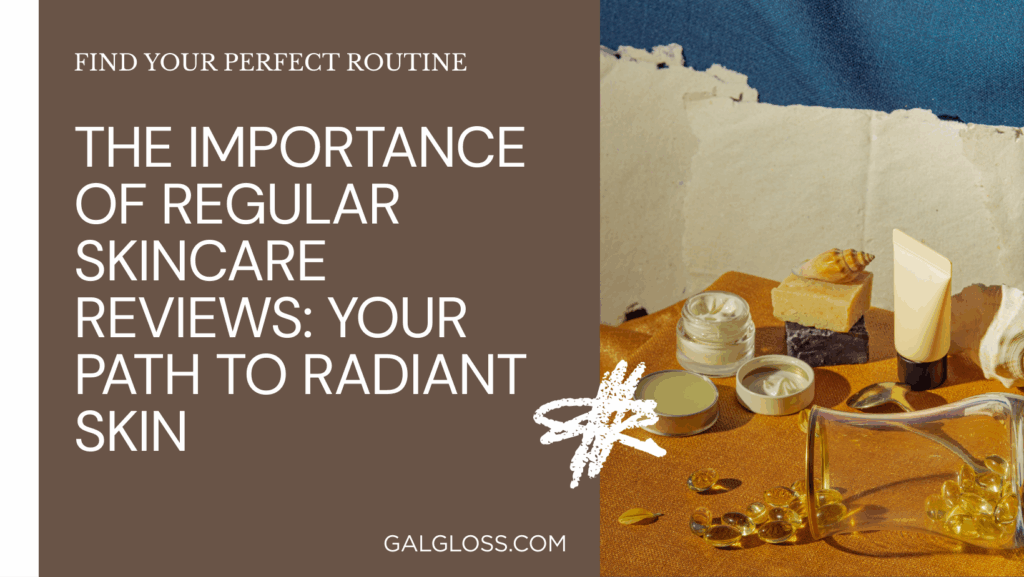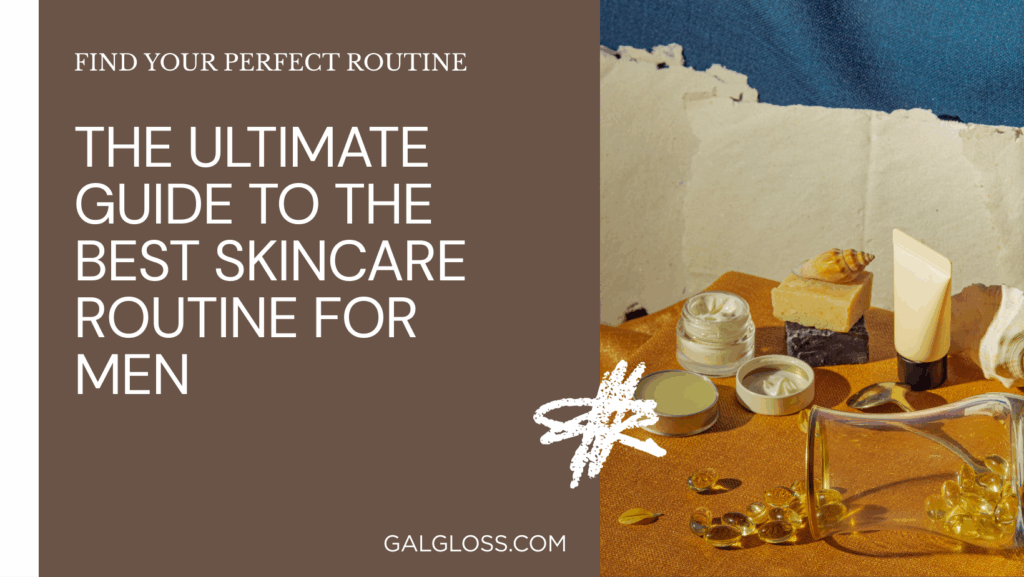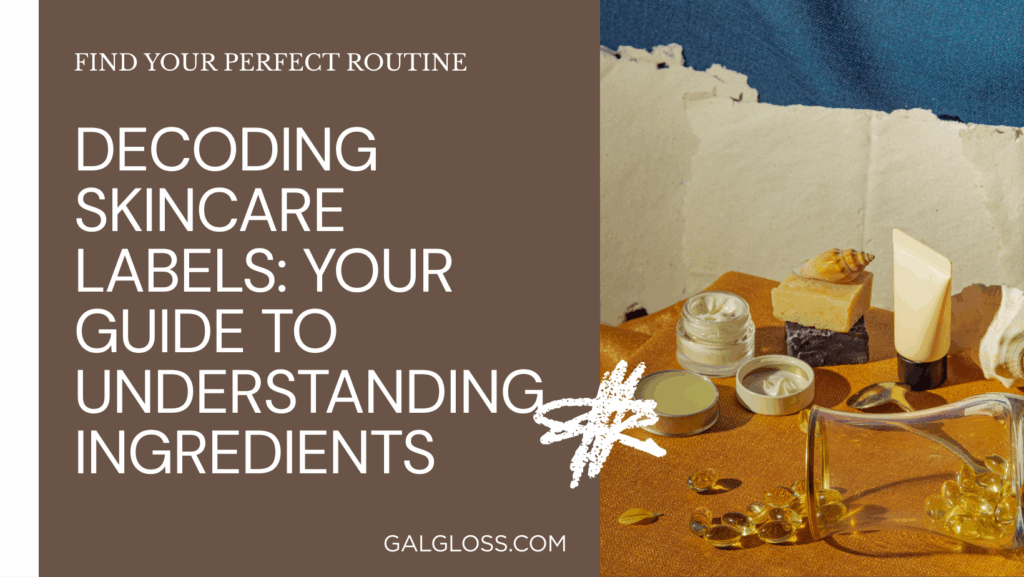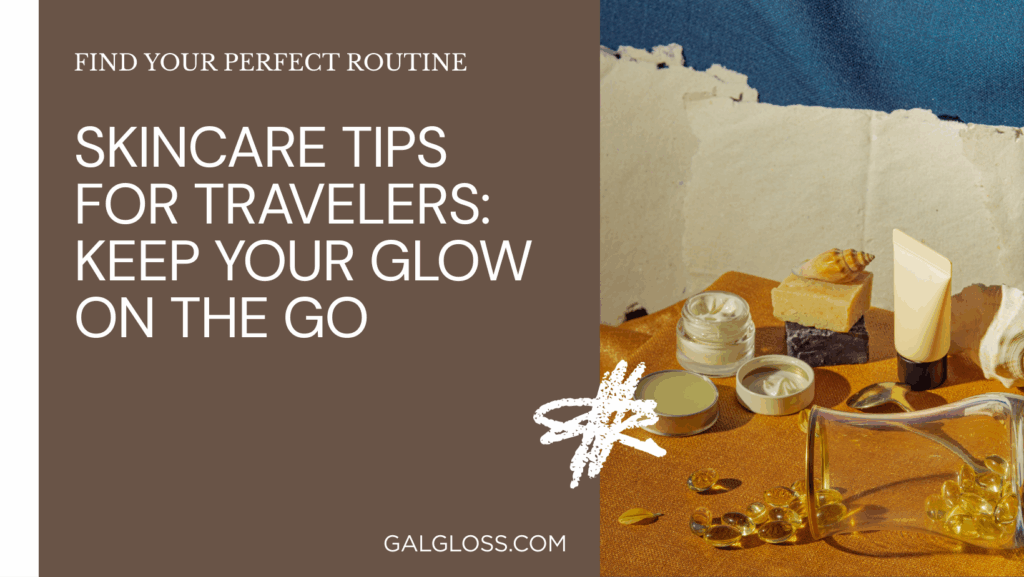Ever feel like you’re on a never-ending quest for the fountain of youth? You’re not alone! In the world of skincare, anti-aging products are the holy grail. But here’s the thing: not all ingredients are created equal. So, how do you separate the good stuff from the snake oil?
That’s where we come in. We’re about to dive deep into the world of anti-aging skincare ingredients. By the time you’re done reading, you’ll be a bonafide expert on what really works to keep your skin looking youthful and radiant.
Why focus on ingredients, you ask? Well, think of your skincare routine like cooking a gourmet meal. You can follow the recipe to a T, but if you’re using subpar ingredients, the result will be… meh. The same goes for your skin. The right ingredients can make all the difference between a so-so complexion and that coveted youthful glow.
Ready to become a skincare ingredient detective? Let’s get started!
Understanding Skin Aging
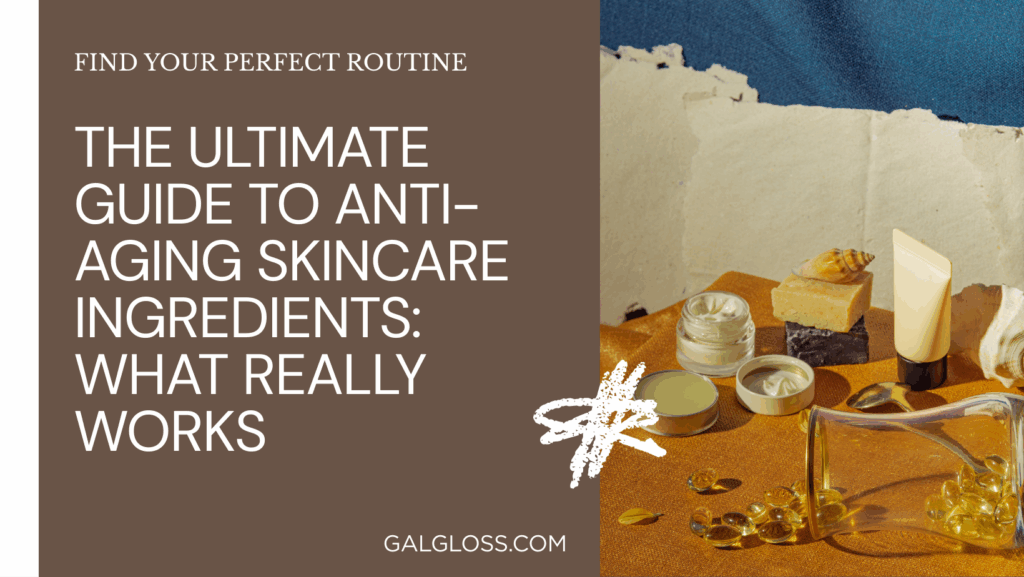
Before we jump into the good stuff, let’s talk about why our skin ages in the first place. It’s not just about birthdays, folks!
What causes skin aging? Two main culprits:
- Intrinsic aging: This is the natural aging process. Think of it as your skin’s internal clock ticking away.
- Extrinsic aging: This is where external factors come into play – sun exposure, pollution, lifestyle choices. These can speed up the aging process.
Common signs of aging skin include:
- Fine lines and wrinkles
- Loss of elasticity (hello, sagging!)
- Uneven skin tone
- Dryness and roughness
- Age spots and hyperpigmentation
Now that we know what we’re up against, let’s explore the ingredients that can help turn back the clock.
Top Anti-Aging Ingredients to Look For
1. Retinoids: The Gold Standard
What are retinoids? They’re vitamin A derivatives, and they’re the crème de la crème of anti-aging ingredients.
How do they work?
- Boost collagen production
- Increase cell turnover
- Improve skin texture and tone
Types of retinoids:
- Retinol: Over-the-counter option
- Tretinoin: Prescription-strength (aka retinoic acid)
- Retinaldehyde: A gentler option
Benefits:
- Reduces fine lines and wrinkles
- Improves skin firmness
- Evens out skin tone
Potential side effects:
- Dryness and irritation (especially when starting out)
- Increased sun sensitivity
Pro tip: Start slow with retinoids. Use a pea-sized amount 2-3 times a week, then gradually increase frequency.
2. Vitamin C: The Brightening Superhero
Vitamin C is like a tall glass of OJ for your skin – refreshing and full of goodness!
How it fights aging:
- Powerful antioxidant
- Boosts collagen production
- Fades dark spots and hyperpigmentation
Different forms of vitamin C in skincare:
- L-ascorbic acid (most potent)
- Magnesium ascorbyl phosphate
- Ascorbyl palmitate
Fun fact: Vitamin C works even better when paired with vitamin E and ferulic acid. Talk about a power trio!
3. Hyaluronic Acid: The Hydration Hero
What is hyaluronic acid? It’s a naturally occurring substance in our skin that holds water like a champ.
How it plumps skin:
- Attracts and retains moisture
- Can hold up to 1000 times its weight in water
Choosing the right molecular weight:
- Low molecular weight: Penetrates deeper
- High molecular weight: Creates a hydrating barrier on the surface
Remember: Hydrated skin = plump skin = fewer visible fine lines!
4. Peptides: The Collagen Boosters
Understanding peptides in skincare:
- Short chains of amino acids
- Building blocks of proteins like collagen and elastin
How peptides support collagen production:
- Signal your skin to make more collagen
- Help repair damaged skin
Popular types of peptides:
- Matrixyl (palmitoyl pentapeptide-4)
- Argireline (acetyl hexapeptide-8)
- Copper peptides
5. Niacinamide: The Multi-Tasking Wonder
Niacinamide, also known as vitamin B3, is like the Swiss Army knife of skincare ingredients.
Benefits for aging skin:
- Improves skin barrier function
- Reduces inflammation
- Evens out skin tone
- Minimizes pore appearance
How to incorporate niacinamide:
- Look for serums or moisturizers with 2-5% niacinamide
- Can be used morning and night
6. Alpha Hydroxy Acids (AHAs): The Exfoliation Experts
Types of AHAs:
- Glycolic acid
- Lactic acid
- Mandelic acid
Exfoliation and skin renewal:
- Slough off dead skin cells
- Promote cell turnover
- Improve skin texture and tone
Combining AHAs with other ingredients:
- Be cautious when using with retinoids
- Can enhance the penetration of other skincare products
7. Sunscreen: The Ultimate Anti-Aging Ingredient
Here’s a truth bomb: No anti-aging routine is complete without sunscreen. It’s the best defense against premature aging.
Physical vs. chemical sunscreens:
- Physical: Zinc oxide, titanium dioxide
- Chemical: Avobenzone, octinoxate
Choosing the right SPF:
- Aim for at least SPF 30
- Broad-spectrum protection (UVA and UVB)
Remember: Sun damage is responsible for up to 80% of visible skin aging. So slather on that SPF, rain or shine!
How to Build an Anti-Aging Skincare Routine
Now that we’ve covered the star players, let’s put them together in a routine:
Morning routine:
- Gentle cleanser
- Vitamin C serum
- Hyaluronic acid serum
- Moisturizer with niacinamide
- Sunscreen
Evening routine:
- Double cleanse (oil-based cleanser followed by water-based)
- AHA toner (2-3 times a week)
- Retinoid (alternate nights with AHA)
- Peptide serum
- Rich moisturizer
Remember: Frequency matters! Some active ingredients (like retinoids and AHAs) should be introduced gradually to avoid irritation.
Natural vs. Synthetic Ingredients: What’s Better?
The age-old debate: natural or synthetic? Here’s the scoop:
Pros of natural ingredients:
- Often gentler on skin
- Rich in antioxidants and nutrients
Benefits of scientifically-formulated synthetics:
- Consistent potency
- Longer shelf life
- Can be more effective in targeting specific concerns
Finding the right balance:
- Look for products that combine the best of both worlds
- Focus on efficacy rather than source
Anti-Aging Ingredients to Avoid
Not all ingredients are your skin’s friends. Watch out for:
Potential irritants:
- Alcohol (denatured)
- Fragrance
- Essential oils (in high concentrations)
Ingredients with limited efficacy:
- Collagen (too large to penetrate skin)
- Snake venom peptides (more hype than results)
The Role of Diet and Lifestyle in Skin Aging
Your skincare routine is just part of the equation. What you put in your body matters too!
Nutrient-rich foods for skin health:
- Fatty fish (hello, omega-3s!)
- Berries (antioxidant powerhouses)
- Leafy greens (vitamin K for the win)
Importance of hydration:
- Aim for 8 glasses of water a day
- Herbal teas count too!
Impact of sleep and stress:
- Aim for 7-9 hours of quality sleep
- Practice stress-reduction techniques like meditation or yoga
When to Start Using Anti-Aging Products
Here’s the deal: It’s never too early to start taking care of your skin!
Prevention vs. treatment:
- Start with sun protection in your teens
- Introduce antioxidants in your 20s
- Add retinoids and more targeted treatments in your 30s and beyond
Tailoring ingredients to your age group:
- 20s: Focus on prevention and hydration
- 30s: Introduce anti-aging ingredients like retinol and vitamin C
- 40s and beyond: Step up the hydration and use more potent formulations
Conclusion
Whew! We’ve covered a lot of ground, haven’t we? Let’s recap the key takeaways:
- Retinoids, vitamin C, and sunscreen are the holy trinity of anti-aging skincare.
- Hydration is crucial – hello, hyaluronic acid!
- Don’t forget about supporting players like peptides, niacinamide, and AHAs.
- Your lifestyle choices (diet, sleep, stress management) play a big role in skin aging.
- It’s never too early to start an anti-aging routine, but tailor it to your age and skin needs.
Remember, the journey to youthful, radiant skin is a marathon, not a sprint. Consistency is key, and patience is your best friend. Don’t expect overnight miracles – give your skincare routine at least 6-8 weeks to show results.
And here’s a final nugget of wisdom: The best anti-aging routine is one that you’ll actually stick to. So find products you love, that work for your skin, and that fit into your lifestyle.
Now go forth and glow, you skincare savant! Your future self (and skin) will thank you.
